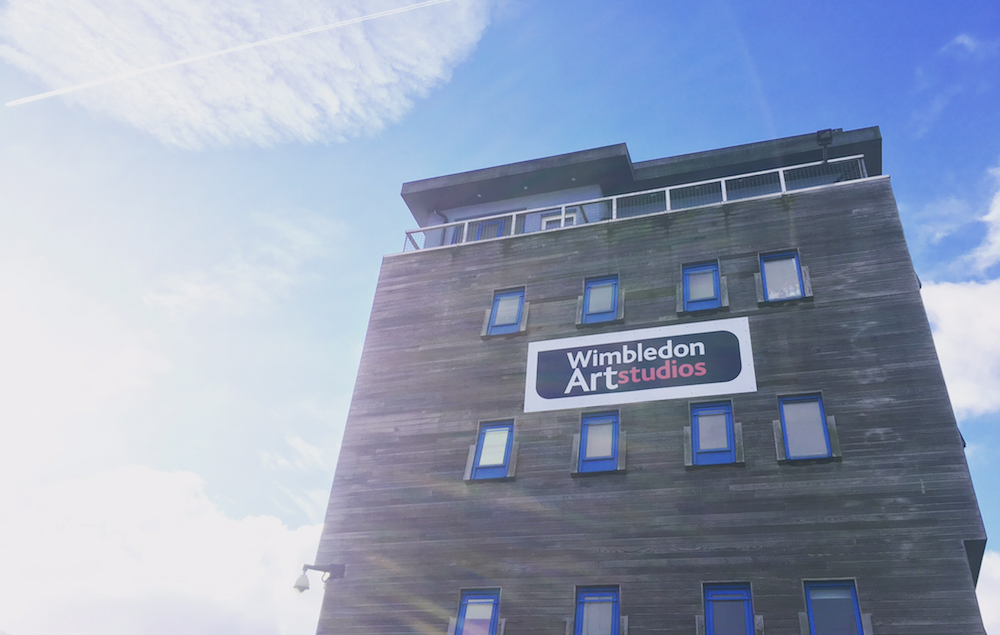
Why artists’ studios are changing with the times
Dedicated studio complexes offer artists supportive communities, career development and chances to connect with local people, says Emily Robson.
For artists looking to build their careers and protect their livelihoods, a stable and secure studio facility to work in is indispensable. But studio spaces in London – and indeed the rest of the UK – have traditionally been housed in leased buildings. This means artists frequently have to relocate and search for new spaces when their leases come to an end.
This uncertainty helps explain why permanent studio models, offering much more than just a space to work in, are becoming increasingly popular among artists. Large-scale, not-for-profit studios such as Wimbledon Art Studios bring together a creative network of artists in one place. You come to work knowing you are part of a community of like-minded people who can offer each other advice and support. You can be part of an artistic, social hub that fuels creativity and alleviates what might otherwise be a lonely working day.
Seeing this kind of setup could inspire a new generation of artists
Another attraction is that these studio hubs offer a variety of spaces, meaning there is a real mix of people under one roof – from all age groups and at different stages of their careers. It’s incredibly satisfying to connect people from different walks of life who have varying crafts and skills, and whose paths may not cross in other circumstances. Such a diverse group of people is a powerful source of crucial advice, ideas and inspiration.
Career development
Dedicated studio spaces also offer artists help with their career development. It’s not easy constantly pushing yourself creatively and having to deal with running your own business at the same time. This is where studio complexes and their communities really come into their own. They can offer support through talks and workshops – everything from life drawing and resin classes to sessions offering advice on social media or accounts. Studios can also help artists develop simply by offering the chance to showcase work to new audiences. All of these opportunities are invaluable to someone trying to make their way in the art world.
Rising studio rents can be a major cause for concern among artists, wherever they might be on their career trajectory. And studios want spaces to be full to maintain vibrant communities. It is so important to keep spaces affordable, and being a not-for-profit studio facility is one way of helping do this. Spaces are created for the benefit of artists and fees are low, helping artists continue to produce work without having to worry too much about overheads.
Relaxed and informal
Open studio days and art fairs hosted by studio complexes are effective ways for artists to make some money and gain exposure. They also offer the chance to build relationships with local communities and develop local networks that may otherwise not arise. This creates real benefits not only for artists, but also for the local area. Many people don’t have such easy access to art, so seeing this kind of setup could inspire a new generation of artists to go into a field that they may not have thought viable.
Traditional galleries and fairs can sometimes be intimidating for the general public, who may not be used to this environment and want to feel more at ease when they browse artworks. Art fairs within a studio complex offer a perfect alternative. Showcasing art in a far more relaxed, informal and accessible way creates a more attractive and appealing atmosphere, where there’s no fear of a salesperson trying the hard sell or the feeling of eyes on you while you look around.
Hosting a show within the studios is quite different to an ordinary art fair. It gives buyers an insight into how an artist works. Usually you wouldn’t get to meet the artist at a fair, let alone have the opportunity to venture into the space where they create their work. Having the chance to speak directly about artworks gives people insight and understanding into why pieces were created. They can discuss the techniques and processes involved in making the work, leading to a greater understanding and a deeper connection. All this is unlikely to happen without this kind of personal interaction. And it’s very rewarding for artists to know that their work will be truly appreciated when it leaves the studio and is taken home.
Studio setups have changed and advanced over the years, as have the needs and expectations of creatives and the art world.
Dedicated artist studios have become the lifeblood of the art industry. Without them, some artists’ careers may become unviable. That’s why building more permanent studio complexes, and enabling them to thrive, is essential if we want to nurture grassroots talent and support talented artists throughout their careers.
Emily Robson is Studio Manager at Wimbledon Art Studios. The Wimbledon Art Fair, exhibiting work from 150 of the studio’s resident artists and makers, returns from 14-17 November.
wimbledonartstudios.co.uk
@WimbledonArt
Join the Discussion
You must be logged in to post a comment.